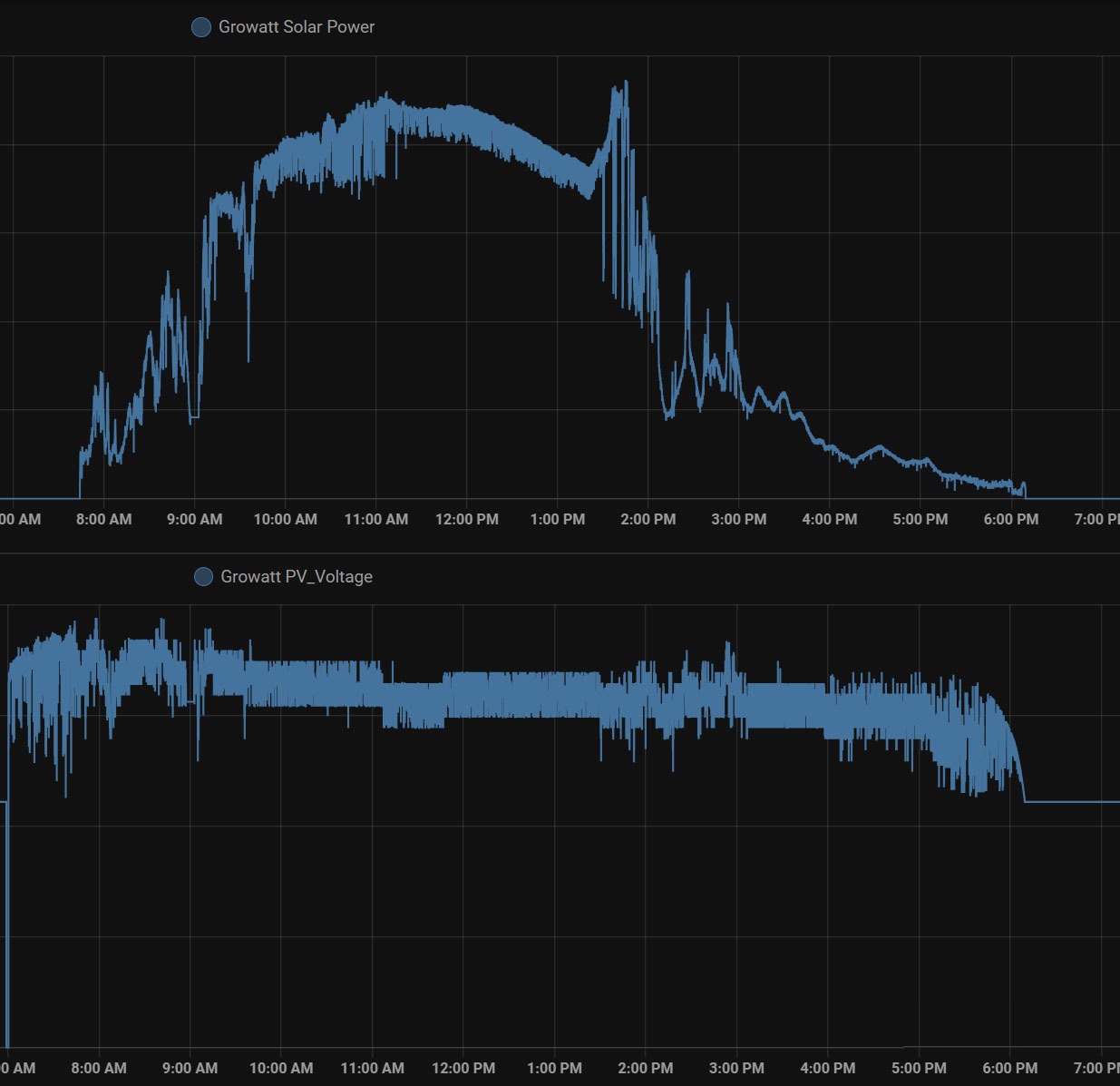As the sun rises in the sky, the angle of our summer array is now coming into spec.
( check back on for how to make your calculations as we give the technical known how away in a post next week)
Solar panels and shading is a big issue for some solar PV arrays and our test system is no exception.
We like to test out problems which we may encounter during a solar installation so that were not scratching our heads on the job and know the solutions.
Lets take a look at what’s happening.

Our array is near flat and bias for SSE.
At the start of the day the sun is low, but we have two forms of shading, a lamppost, and a hedge top. as the sun moves around, the hedge has a hold on one or two cells lower the performance of the array.
We then move to the day as the sun rises further and we have “standard solar” this is then followed by a roof line running south to north, which gradually shades the array, until it becomes 90 degrees to the array.
There are trees which are far away and show our of focus on the panels, but none the less adds part shade, and the sun drop, there array is facing away from the sun and therefore has reflected light from other houses quite some distance away rather than any direct light.
The image is showing half the array as the panels run side by side and the lower panels are more directly affected by the post, the post is not an impact for the early starts in summer, and the hedge for some hours this time of the year causing problems until around noon.
To give you some idea, the sun rise is at 10:30 position of summer, the summer sun rise is at 4:30, thats about 90 degrees difference. the lamppost is dead center to the array and acts like a sun dial. for most of the year it is off the panels by 09:30 ( as an average)
As you may have seen we looked at a Tigo TS4 unit its a “solar panel optimiser”. We are going to install this on the array to see if they work and what they do….
Now our array is modern and has by Pass diodes, they work just fine with the sharing problems. Dropping the panels voltage when the array is under full power. However by pass diodes tend to be a little “floppy” when deciding to work or not. as we have three by pass diodes for each set of cells within the panel.
By pass diodes work from the current in the line, therefore when they work the voltage is dropped.
It “detects” the difference and makes a choice to work on the basis that the flow would be backwards, which the diodes block..

Our actual shading on the lower array is more like this…..

Did you know that this type of solar panel is grouped in 12 v strings within the panel.
You have 3, 12V 8.5 amp solar arrays within one panel making a 3S 1P configuration.
You could effectively take out the diodes and connect cables to each set to make a 12V power source that was 25.5 amps.
To give you an idea how this effects the production the array above makes around 1.2 amps difference, this work out about 40Watts in reality, however on larger arrays this can be a massive difference.
In this video we talk about the difference between voltage and amps…

No responses yet